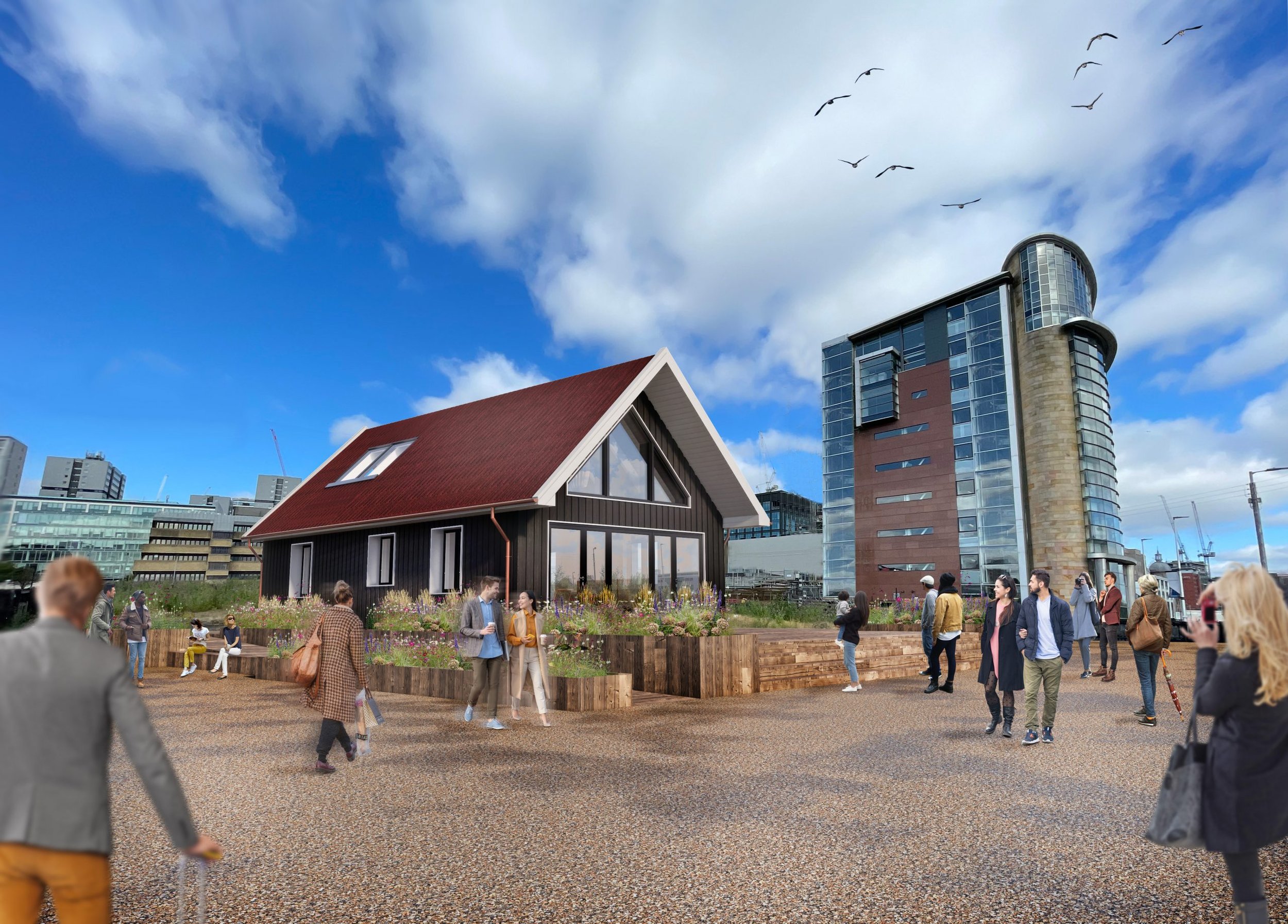
Architects: Roderick James Architects
Developer: Beyond Zero Homes
COP26 House
Constructed in Glasgow for the UN Climate Change Conference in November 2021, the COP26 House showcases how zero carbon homes can be built affordably using homegrown timber and an existing skillset.
The COP26 House was designed by Roderick James Architects and developed by Beyond Zero Homes - a collaborative group of more than 24 companies from across the building sector. Considerations have been made regarding its performance during use, the potential for material reusability at the end of its lifespan, and its affordability. The house was fully constructed and fitted out within just three months.
The House was designed as a kit of parts that could easily be put together by self-builders. The system can also be adapted to larger scale developments and offsite fabrication. The one-bedroom COP26 House has a mezzanine studio and is built on a modest 10 metre by 5 metre footprint.
It was manufactured offsite by Robertson Timber Engineering in Elgin before being transported to site in two lorry-loads.
The house was designed with circular economy in mind, at the end of its life, the house can easily be dismantled and its materials re-used or recycled.
The main structure of the house is made from homegrown C16 Sikta spruce- avoiding the need for imported timber and reducing the significant carbon impact of transport, as well as providing benefits for the local economy.
Due to the high levels of natural insulation – up to 300 millimetres of wood fibre – and design using Passivhaus principles, the house will only require heating at the coldest times of year.
The roof of the house is not only constructed from, but also clad in timber, using BSW’s IRO cladding. Inspired by the Japanese process of Yakisugi, IRO is heat enhanced and coated for a more durable and striking finish. Black IRO timber cladding was also chosen for the external walls.
By using this substantial amount of lower embodied carbon timber products, the COP26 House exceeds the most stringent RIBA 2030 Challenge targets for embodied carbon – by a substantial 22%.
The house used 24 tonnes of carbon in building however, it stored more than double this amount - storing 53 tonnes of biogenic or sequestered carbon.

